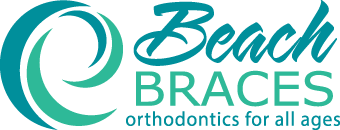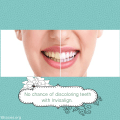Are All Orthodontic Treatments [the Same]?
Last Updated on May 28, 2019 by Gio Greenard
A lot of people who need work on their teeth are confused about who they need to go to. There are a few different types of professionals to seek for work on the teeth. First of all, there are dentists. Dentists mostly specialize in aspects like the cleanliness of the teeth, the health of the teeth, and the removal of unnecessary or damaged teeth. You should go to your dentist every year or every 6 months to have them inspected and cleaned. Another professional that specializes in the care of teeth is an orthodontist. Orthodontists focus their time on straightening the teeth. You have probably noticed people with metal brackets in their mouth called braces. This is one of the things that you will have to go to an orthodontist to have done. Because there are different types of dental professionals, some people are confused about them. In this article, we will specifically discuss orthodontic procedures and why they aren’t the same as the procedures you will have at a dentist.
What Exactly Does an Orthodontist Do?
If you aren’t familiar with the term orthodontist, you may have questions similar to these: What is Orthodontic Treatment? What is considered orthodontic treatment? What are the types of orthodontic treatment? Etc. First of all, orthodontists are responsible for different tasks than that of a dentist. Orthodontists will not clean your teeth or pull teeth. They will simply realign your teeth or jaw. Most people who go to the orthodontist do so in order to get braces. Braces, which we will discuss later on in this article, are a device that is used to straighten the teeth. Orthodontists specialize in determining the best means of moving your teeth. Not everyone is eligible for or needs braces, so an orthodontist is necessary to make that call. So to answer the questions specifically, we will go through each one individually. First: What is Orthodontic Treatment? Orthodontic treatment is anything that involves the realigning of your teeth or jaw. As stated before, braces are the most common tool used. However, there are other options which we will discuss later on. Second: What is considered orthodontic treatment? Essentially, an orthodontic treatment is the process of getting the device to straighten the improper positioning of the teeth. Third: What are the types of orthodontic treatment? There are four types of orthodontic treatment that are used today which include:
- Fixed braces- Those which you cannot remove. The most common option.
- Removable braces- Similar to normal braces, but are removable.
- Headgear- Uncommon, but used in certain circumstances.
- Plastic retainer- Used for slight repositioning.
How Do Braces Work?
As stated previously, an orthodontist will help you reposition your teeth. Due to the fact that they often choose braces as the method to do so, we should probably discuss a little about them. First of all, braces are made up of individual brackets which are fitted onto each tooth. After all of the brackets are put on, a wire will be put through them. The wire will then be held in each bracket with a rubber band. Over time, the wire puts pressure on the teeth as it tries to straighten itself. As the pressure is constantly applied, the teeth will begin to slowly move. Over time, stronger wires will be put on until the teeth are finally straight. When it comes to jaw realignment, this happens at the same time. If you have an overbite or an underbite, it means that either your top or bottom teeth are further forward than the other. If you do, your orthodontist will put a metal part on your back teeth on the top and bottom. Depending on the severity of the condition, the brackets will be located a certain distance apart. You will be required to put a rubber band that connects to the two brackets. This will pull your jaw and over time, straighten it. Now, all of this information may be hard to fully interpret without actually seeing it yourself. In order to get a better idea of the process of having braces, click here for an animated video. (1:47 demonstrates how the overbite is fixed with bands)
A Brief History of Orthodontics Beach Braces
What Will Your Orthodontist Actually Do?
You may think that the braces will do all the work and that all orthodontists are the same. In reality, your orthodontist will play a big role throughout the process. Each individual orthodontist will offer a different process and some will be much better than others. It is important to seek a professional, high quality, and trustable orthodontist to ensure that the process goes well. First of all, one of the things that a caring orthodontist will tell you is that you cannot eat certain foods. There are a long list of foods that you will not be able to eat if you get braces and your orthodontist should advise you of these. Among the foods that you will be asked not to eat are:
- Chewy food
Chewy foods like licorice are bad for the brackets and will get stuck in them. - Sticky food
Sticky foods such as caramel or candy like taffy can be difficult to remove from your braces. - Food that requires front bite
Foods like corn on the cob or apples require you to bite with your front teeth. These foods are very capable of breaking your brackets or wire.
- Crunchy/hard food
Crunchy and hard foods like popcorn can break your brackets or cause your wire to snap.
Another important role that your orthodontist will serve is determining the best way of fixing your teeth. Everyone’s teeth are different and they will all need to be dealt with in a unique way. Orthodontists who know what they are doing will be able to make a good choice whereas unprofessional ones will not make as thoughtful of a choice.
Final Thoughts?
Seeing an orthodontist is a big part of your life and can drastically improve your smile. Be sure to be prepared for what is to come. Understand whether or not you will need permanent braces. If you will, be prepared for some pain and changes in eating habits. Whatever you do, be sure to find a professional orthodontist. Doing so will ensure that you will be in good care and that your smile will be fixed as soon as possible.
BEACH BRACES ORTHODONTICS
220 N. Aviation Blvd. Suite A
Manhattan Beach, CA 90266
Phone: (310) 379-0006
Are All Orthodontic Treatments the Same?

Dr Patti Panucci attended the University of Louisville School of Dentistry for four years, where she graduated with a DMD degree (May 2000) among the Top 10 in her class. Following that, she headed west to Los Angeles to complete her three-year residency at one of the top-ranked orthodontic programs in the country – the University of Southern California.
Along with her certificate in orthodontics, Dr. Panucci earned a master’s degree in craniofacial biology. During those three years, she fell in love with Southern California beach life and decided that this was where her future lay.












Leave a Reply
Want to join the discussion?Feel free to contribute!